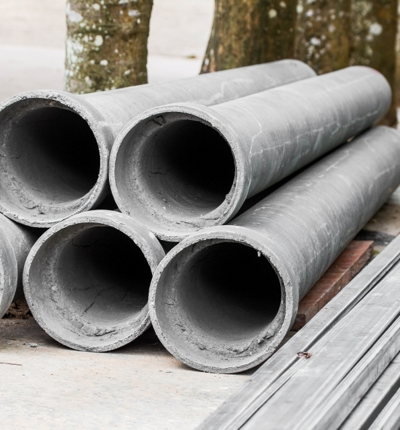
International Workers’ Memorial Day
Posted on 26 April 2024
Every year more people are killed at work than in wars. Most don't die of mystery ailments, or in tragic "accidents". They die because an employer decided their safety just wasn't that important a priority. International Workers’ Memorial Day (IWMD) is held annually on the 28 April and commemorates those workers.
The Health and Safety Executive (HSE) annual statistics[1] show on average that in the UK alone, 135 workers are killed in work related accidents each year. They also estimate that there are around 13,000 deaths each year from occupational lung disease and cancer caused by past exposure at work to chemicals and dust (such as asbestos or silica).
However, safety campaigners estimate that the true figure for all work-related deaths is closer to 50,000 each year in the UK alone, 140 a day before the pandemic arrived to make things worse[2].
International Workers’ Memorial Day was first brought to the UK in 1992, by the late great hazards campaigner, Tommy Harte as a day to “Remember the Dead: Fight for the Living.” On 28th April every year we come together to remember those who have lost their lives because of their work and renew our commitment to fight for the living and make work safe.
Asbestos is not just a historic problem
Asbestos is a naturally occurring fibrous mineral that is mined from the ground. It is unique as it is the only mineral that can be woven into cloth. It can also be moulded into other forms such as sheeting, paper and rope. Asbestos is strong, flexible and fire resistant, and was often referred to as the “magic mineral”.
It was extensively used in UK industry and construction from the 1900s onwards, and installed extensively as fireproofing and insulation throughout the 1950s to the 1980s.
The dangers to health of exposure to asbestos have been known about for over 100 years. It was first regulated in this country in the 1930s and by the 1960s, it was common knowledge that exposure to even small amounts of asbestos dust could cause the fatal cancer mesothelioma. In fact, it was front page news in the Sunday Times in October 1965.
It is easy to believe that asbestos is a problem of the past: after all, there has been a UK-wide ban on asbestos importation, supply and use since 1999. However, 5,000 people die from asbestos-related illnesses every year in the UK alone because of historic exposure to asbestos dust.
Asbestos didn’t disappear when it was banned in the UK
Unfortunately, exposure to asbestos materials continues in building, maintenance, demolition, renovation or refurbishment. Asbestos can potentially be found in any building built or refurbished before the year 2000. Houses built in the 1950s, 1960s and 1970s are very likely to include asbestos materials. Asbestos remains in millions of homes, business premises and public buildings today.
Asbestos-related diseases are life-limiting, and in most cases, fatal. The HSE’s recent campaign, Asbestos and You, is also pushing the message that the risks associated with asbestos must be taken much more seriously going forward.
As we reflect on those we have lost through work exposure to asbestos, it is crucial to remember that there is no safe or controlled use of asbestos. While suffering, disease and deaths continue, we stand with individuals, trade unionists, activists and victim groups who remain committed to preventing asbestos exposure and to eliminate all asbestos-related diseases.
[1] Health and safety statistics - HSE
[2] Updated – April, 2020 (gmhazards.org.uk)
In 2024 the theme is: #IWMD24 | The Climate Crisis and Workers’ Health

With last year being the hottest on record, this year’s theme will focus on exploring the impacts of climate change on occupational safety and health. Changing weather patterns have notable impacts on the world of work, particularly affecting workers' safety and health. Examples of occupational risks exacerbated by climate change include heat stress, UV radiation, air pollution, major industrial accidents, extreme weather events and increased exposure to chemicals.
Extreme and changing weather patterns affect job security, travel to and from work, and the general health of workers including a negative impact on workers' mental health. Work in extreme weather can cause fatigue and an increase to workplace injuries and stress-related disease, higher UV exposures place workers at risk of chronic health problems, including skin cancer and eye damage.
This international day is marked by the union movement to remember all workers who lost their lives to workplace illness or injury, and to recommit ourselves to fighting to keep workers safe: Remember the Dead, Fight for the Living!
International Workers’ Memorial Day events
Search for #IWMD events, or go to the TUC website which has details of events across the country. Click here for more information
Justice for industrial disease victims
Our Industrial Disease Team specialise in representing workers exposed to hazardous substances. With decades of experience, we have successfully fought for the rights of individuals suffering from a range of occupational diseases, and our commitment to changing laws to protect these workers underscores our dedication to justice.
We have been representing clients in industrial disease claims for over 30 years and our team of experts is one of the largest and most respected litigation teams in the UK and internationally.
If you have been affected by asbestos exposure and require legal advice in relation to seeking compensation, please contact our Asbestos and Industrial Disease legal team on 0800 689 5854 for confidential and expert advice. We treat every client as an individual and strive to take away the worry of a legal claim. Our services are available at no financial risk to you.
Written by Joanne Candlish

